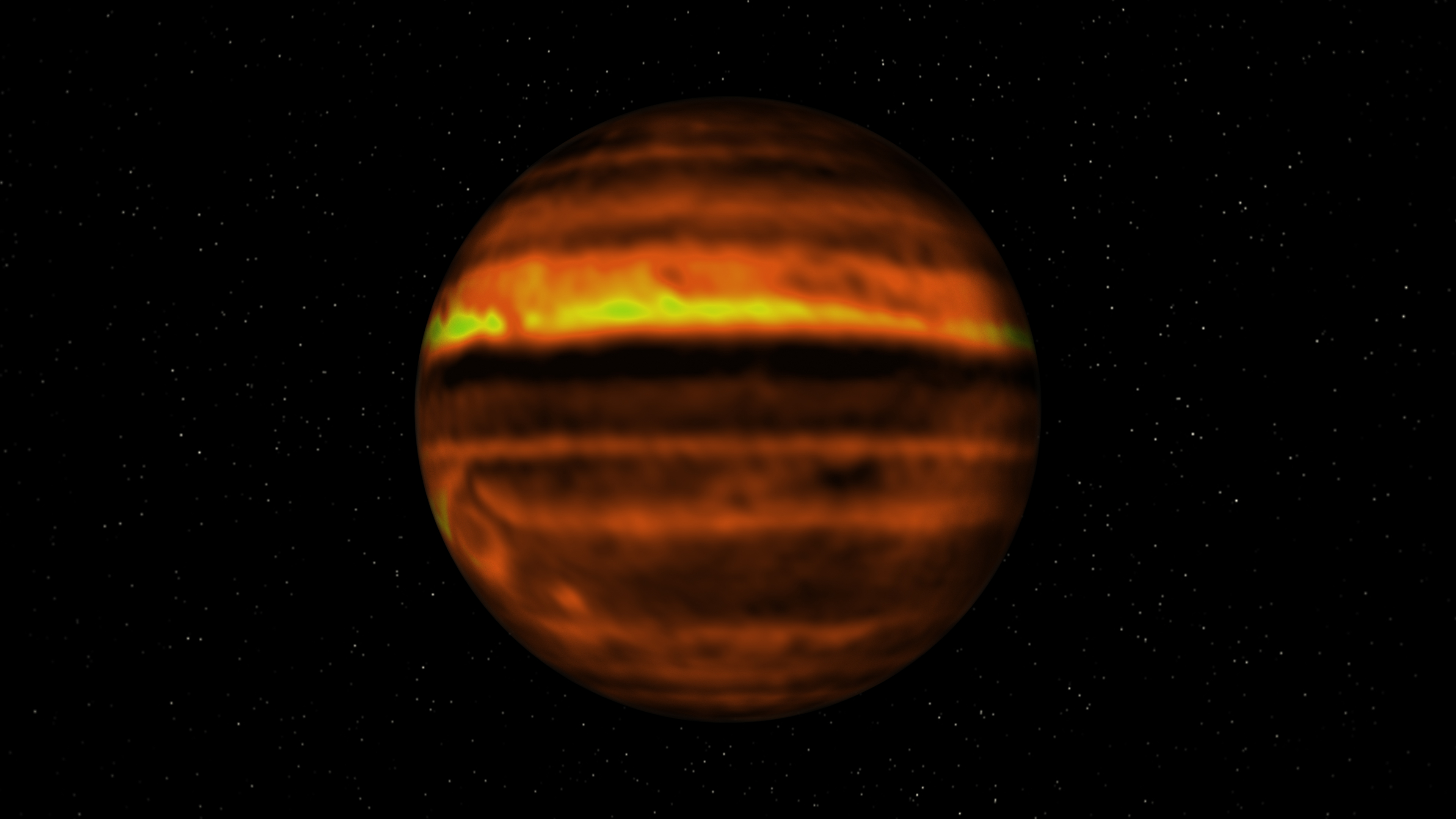Ammonia Storms on Jupiter Are Messing Up Its Picture-Perfect Cloud Bands
Jupiter's clouds are a beautiful annoyance, blocking a deeper view by scientists into the gas giant — a necessary view if they want to understand how the planet works.
But astronomers have made some inroads on that problem by using the Atacama Large Millimeter/submillimeter Array (ALMA) telescope to study Jupiter's atmosphere with radio waves. Even more intriguing, they did so just days after an amateur astronomer spotted what seemed to be an eruption of ammonia spouting from deeper within the planet and spewing into what scientists call the South Equatorial Belt.
"If these plumes are vigorous and continue to have convective events, they may disturb one of these entire bands over time, though it may take a few months," lead author Imke de Pater, an astronomer at the University of California, Berkeley, said in a statement. "With these observations, we see one plume in progress and the aftereffects of the others."
Related: Hubble's Jupiter Views Could Demystify Shrinking Great Red Spot
Scientists have seen the South Equatorial Belt change before. The cloud region undergoes what astronomers have dubbed "fade and revival cycles," as the belt fades from brown to white, then darkens again with storm outbreaks. This time, de Pater and her colleagues wrote, there was no fade, but they still believe their observations mark another installment in this cycle.
Another region of Jupiter, the North Temperate Belt, also sees storm outbreaks every five years or so. Four massive white plumes nearby had dyed the belt orange a few months before de Pater and her colleagues set to work gathering observations of the striped giant.
"Our ALMA observations are the first to show that high concentrations of ammonia gas are brought up during an energetic eruption," de Pater said. "The combination of observations simultaneously at many different wavelengths enabled us to examine the eruption in detail."
Breaking space news, the latest updates on rocket launches, skywatching events and more!
All told, the team tracked down data from six different ground-based telescopes, plus NASA's Hubble Space Telescope. But it was the ALMA data, gathered in the first few days of January 2017, that was particularly special.
The telescope array catches radio waves, a particularly long form of light, which lets the instrument peer below the cloud tops that are visible through a typical telescope. Those top clouds are full of ammonia — but ALMA was able to map that compound's abundance about 25 or 30 miles (40 or 50 kilometers) down into Jupiter's atmosphere.
The resulting map traces the eruption in the South Equatorial Belt down below the visible cloud tops. The astronomers believe that the eruption is rooted just a bit farther down in the atmosphere, about 50 miles (80 km) below the surface. That's the same level where scientists believe a layer of water supports Earth-like lightning, which suggested to the team that the ammonia plumes are created by moist air circulating at the bottom of water clouds.
The research is described in a paper accepted by the Astronomical Journal that was posted to the preprint server arXiv.org on Aug. 22.
- In Photos: Juno's Amazing Views of Jupiter
- Voyager 1's Historic Flyby of Jupiter in Photos
- Incredible NASA Photos Show Jupiter's Marbled Atmosphere
Email Meghan Bartels at mbartels@space.com or follow her @meghanbartels. Follow us on Twitter @Spacedotcom and on Facebook.

Meghan is a senior writer at Space.com and has more than five years' experience as a science journalist based in New York City. She joined Space.com in July 2018, with previous writing published in outlets including Newsweek and Audubon. Meghan earned an MA in science journalism from New York University and a BA in classics from Georgetown University, and in her free time she enjoys reading and visiting museums. Follow her on Twitter at @meghanbartels.


